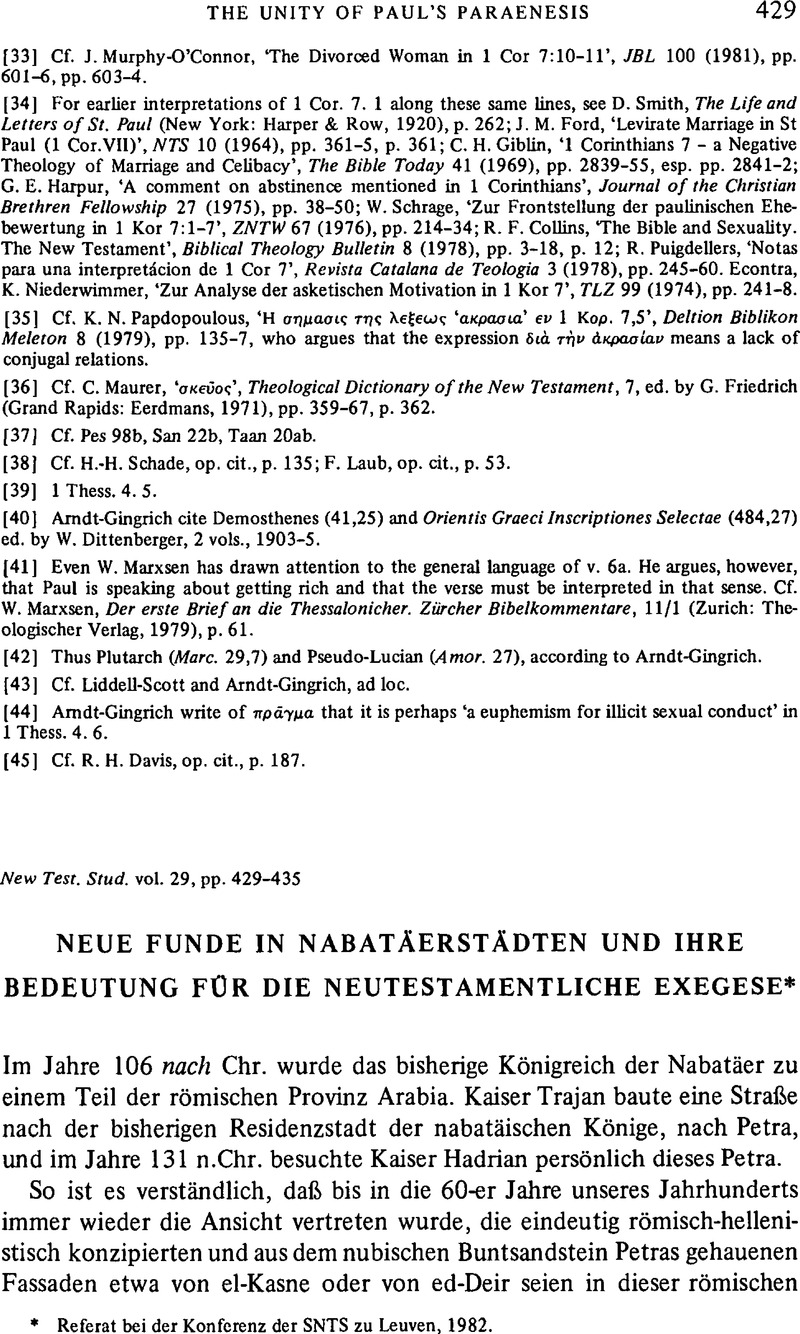Published online by Cambridge University Press: 05 February 2009

[1] Hans-Ulrich, Nübel, ‘Arabische Eigenart und Hellenismus in der Stadt Petra’, in: ZDPV 73 (1957), pp. 167–83.Google Scholar – Literaturangaben über die neuere Forschung in: Encyclopedia of Archaeological Excavations in the Holy Land, Vol. 4 (Jerusalem, 1978), S. 959.Google Scholar
[2] Abraham Negev, in: ANTIKE WELT, Sondernummer 1976 ‘Die Nabatäer’, S. 58.
[3] Veröffentlicht in: Rev Bibl 73 (1966), pp. 236–47.
[4] Karl Schmitt-Korte, Die Nabatäer. Spuren einer arabischen Kultur der Antike. Ein Begleiter durch die archäologische Ausstellung … (Hannover, 1977), Deutsch-Jordanische Gesellschaft Hannover, 1976, S. 41.
[5] Vgl. Ehud, Netzer, in: Encyclopedia of Archaeological Excavations in the Holy Land, Vol. 2 (Jerusalem, 1976), S. 566–70Google Scholar. E. Netzer konnte inzwischen seine Ansichten weiter präzisieren: ‘Recent Discoveries in the Winter Palaces of Second Temple Times at Jericho’, in: QADMONIOT, Vol. 15, No. 1 (57), 1982, pp. 22–9.Google Scholar
[6] A.a.O. Vol. II, S. 482, zeigt eine Farbtafel die Freskoreste dieser Grabungen auf dem Mount Zion.
[7] Bellarmino Bagatti/Eugenio Alliata, ‘Ritrovamento archeologico sul Sion’, in: Liber Annuus 31 (1981), pp. 249–56.Google Scholar
[8] Dieser Gesichtspunkt wird m.E. vernachlässigt bei Bargil Pixner, ‘An Essene Quarter on Mount Zion?’, in: Studio Hierosolymitana (Coll. Maior, n. 22) (Jerusalem, 1976), Band 1, S. 245–84.
[9] Vgl. Benedikt, Schwank, ‘Das Theater von Sepphoris und die Jugendjahre Jesu’, in: Erbe u. Auftrag 32 (1977), pp. 78–86.Google Scholar
[10] Virgilio Corbo/Stanislao Loffreda, ‘Nuove scoperte alia fortezza di Macheronte. Rapporto preliminare alia quarta campagna di scavo: 7 settembre – 10 ottobre 1981’, in: Liber Annuus XXXI (1981), pp. 257–86.
[11] Stanislao, Loffreda, ‘Nuove scoperte a Macheronte’, in: LATERRA SANTA 58, 1–2 (1982).Google Scholar
[12] Siehe oben Anm. 10, S. 259: ‘… c' è da escludere che i triclini avessero una pavimentazione musiva’.
[13] Emil Schürer, Geschichtedes Jüdischen Volkes, 1. Band (3.+4. Leipzig, 1901), S. 737, Anm. 25.
[14] Ya'akov Meshorer, Nabatean Coins (QEDEM No. 3) (Jerusalem, 1975), pp. 12 and 80, n. 199.